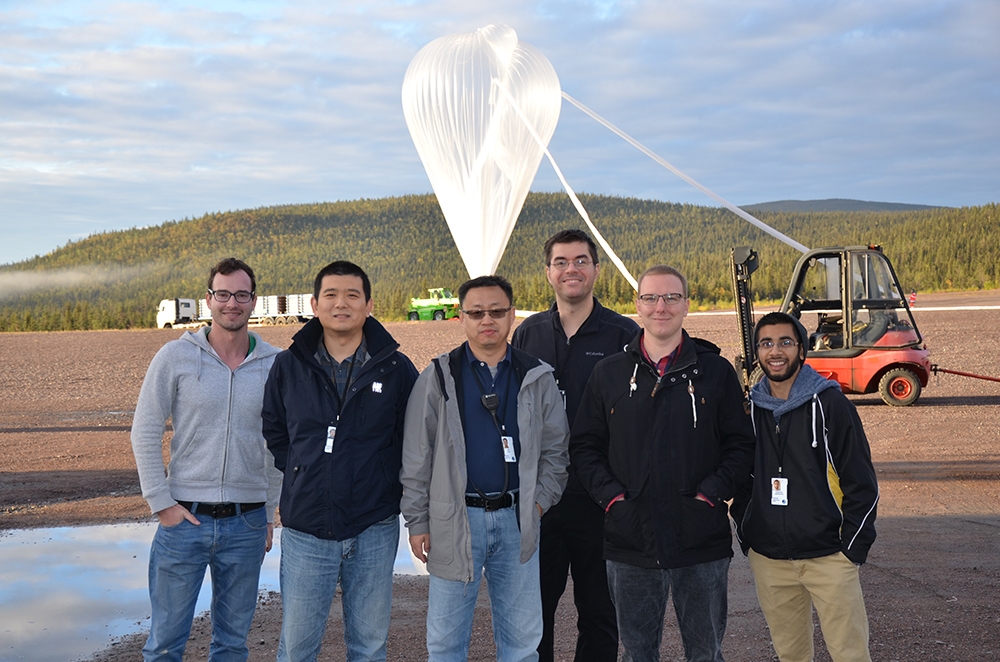Arfi Hagiyusuf (Features Editor) and Hassam Munir (Executive Online Editor)
Featured image: Kagalwala (far right) worked on the mechanical design of the spectrometer. | Courtesy of SDCN Lab
Imagine getting the chance to build part of a balloon that goes into outer space. That’s the opportunity Mohammed Kagalwala, a fourth-year space engineering student, got at the end of August. Kagalwala was awarded the Lassonde Undergraduate Research Award and was able to go to Kiruna, Sweden, with his supervisor, Professor Jinjun Shan, to conduct research and collect data about global warming.
The team of researchers launched a 2D Imaging Fabry-Perot Spectrometer, an instrument that uses wave interference to make precise measurements of wavelengths of light. The instrument allowed the team to collect measurements of A-band oxygen at altitudes of 30-35 kilometres and to measure aerosols, surface albedo and pressure. These measurements are then used to develop column models of gases such as CO2 and CH4—carbon dioxide and methane. Identifying and understanding this measurement can help in the creation of carbon management policies to manage the effect that greenhouse gases have on the atmosphere.
Kagalwala’s involvement in the project spanned four months, in which he worked primarily in mechanical design. He says the experience allowed him to improve soft skills he had developed during his undergrad, as well as network with others in the profession.
The team stayed in Esrange Space Center, which is an hour away from Kiruna. The city was used as the launching site because of an ongoing partnership between the Canadian Space Agency and the French Space Agency, which allows for Kiruna and Timmins, Ontario, to be used as launch sites. This centre matched the needs of the team, as it is used for high-altitude balloon flights and sounding rocket launches.
Kagalwala tells Excalibur that the date of the launch was not fixed and depended highly on weather conditions. He remembers anxiously waiting for the weather to favour the research team prior to the balloon finally being launched on September 3. However, he describes his time working on the project as relaxed and enjoyable, remarking the team had front row seats to see the Northern lights.
“Though it might seem like it was all work and no play, it wasn’t. Our nights were filled with laughter, storytelling, cooking and playing billiards. This was a completely surreal experience for me, as I was the youngest person on the base. Being surrounded by like-minded people with great stories and experiences to share made my stay even better. If I were presented with this opportunity again I would accept it in a heartbeat,” he says.
When asked if the Lassonde School of Engineering provides enough opportunities of this nature, Kagawala remarks that Lassonde is on the right track. Promoting opportunities, competitions and workshops with professionals in the industry would provide more opportunities for students.



Hi Rebecca! Lovely insight into writing your first novel. I’m with Alex. Do consider approaching the indie publishers if the agent thing do#1n&e82s7;t work. Nothing against self publishing, but it can be nice to have a hand to guide you through the process, especially with your first one. I look forward to reading, whichever method you favour. All Best, Jane x